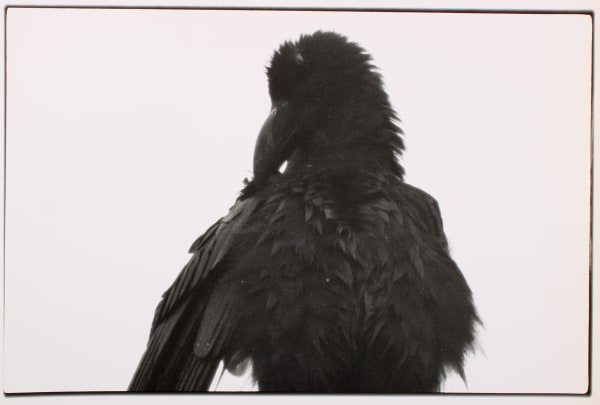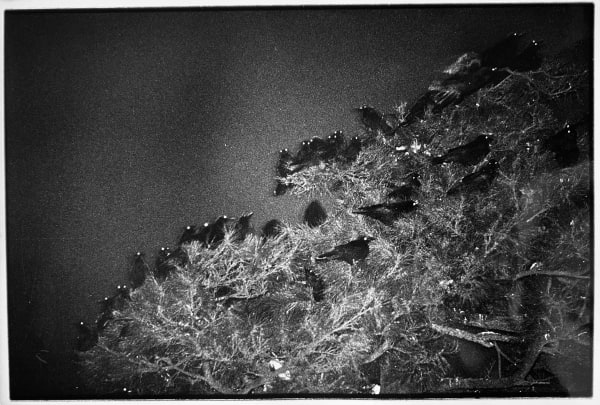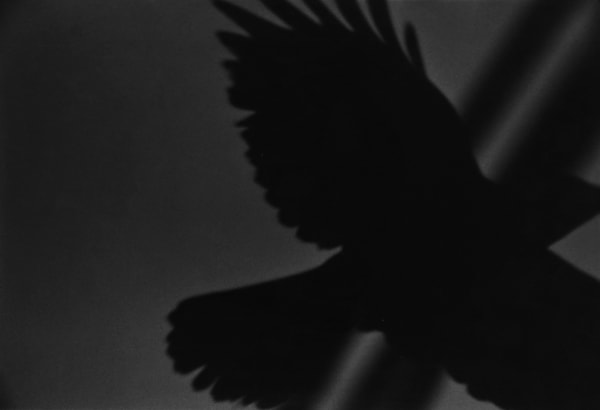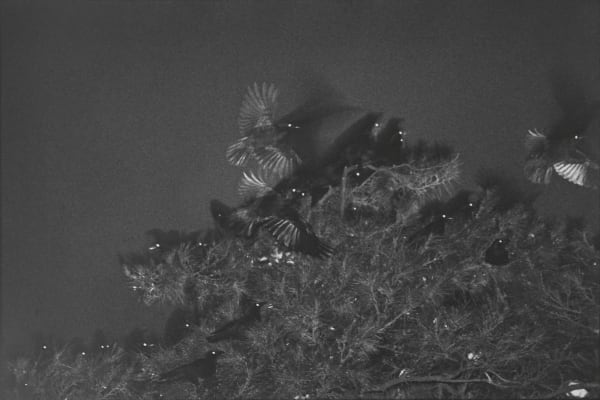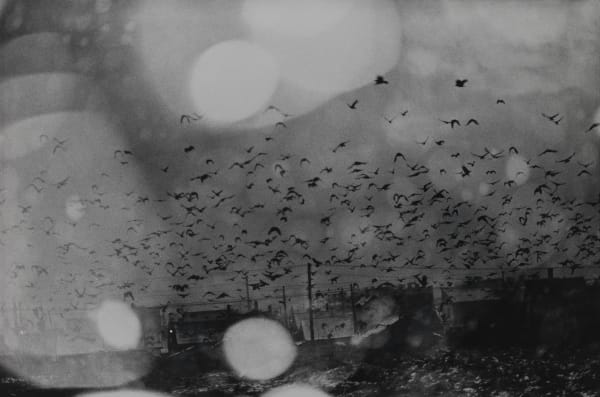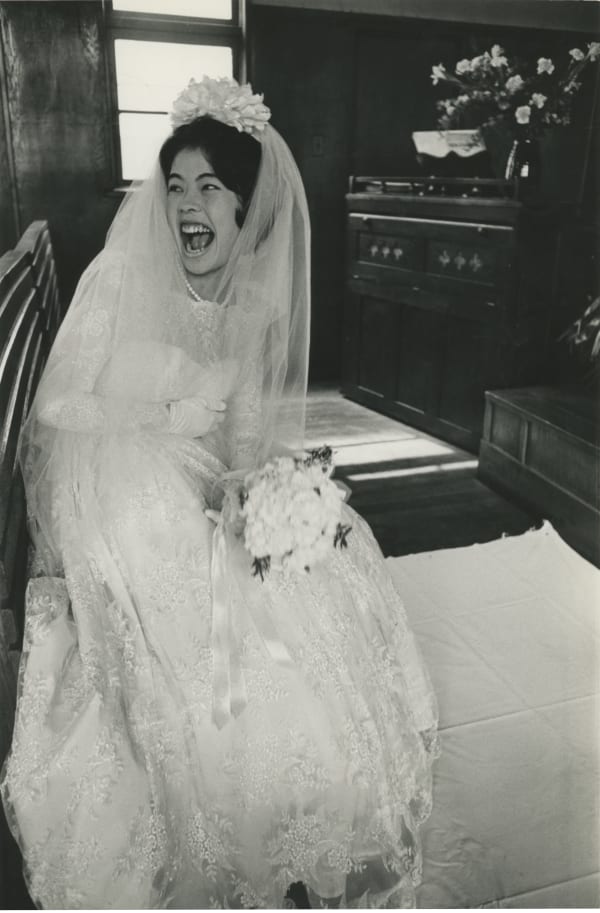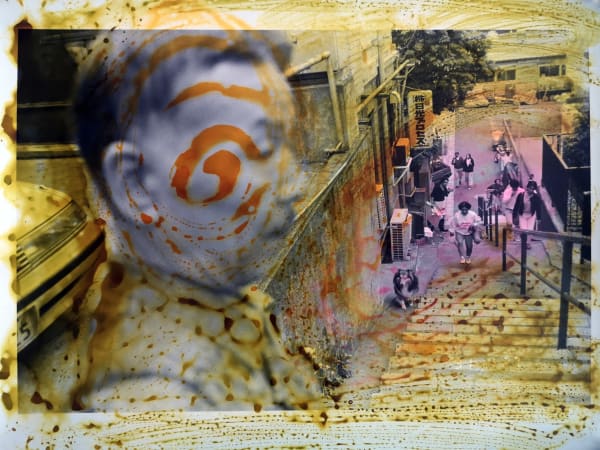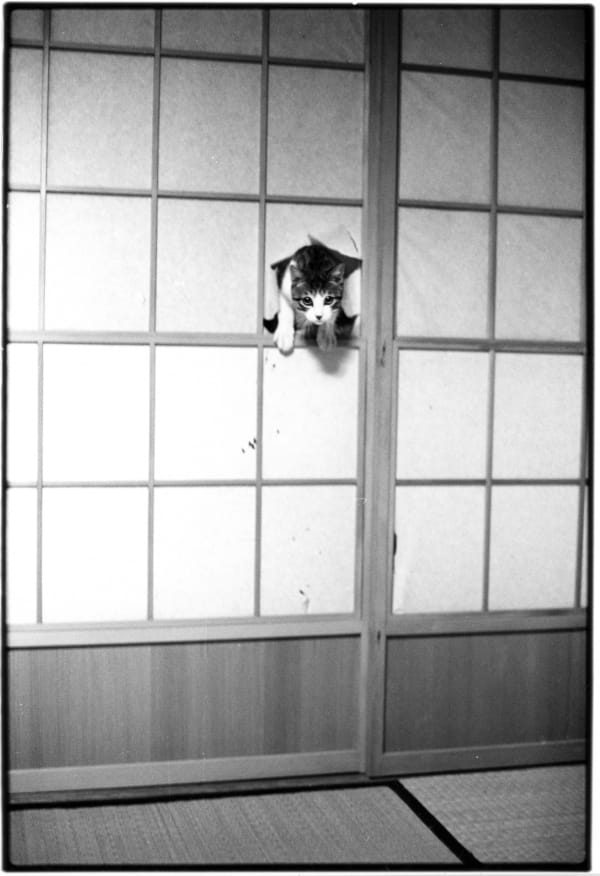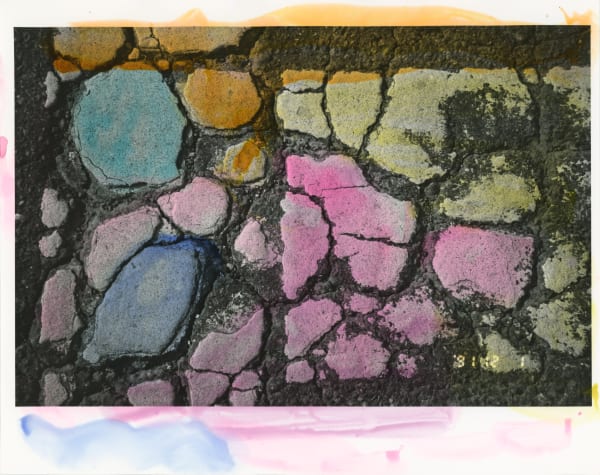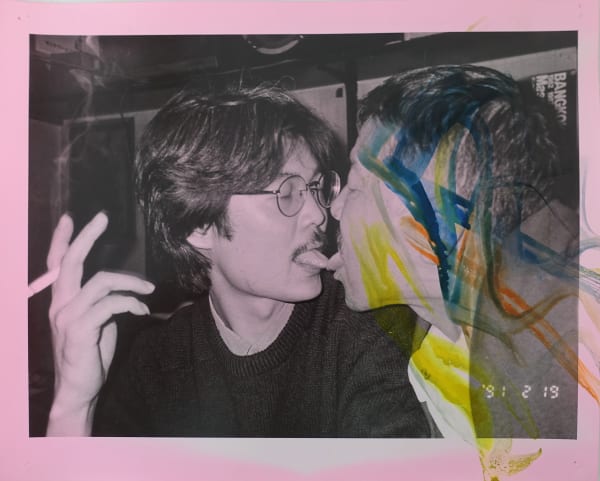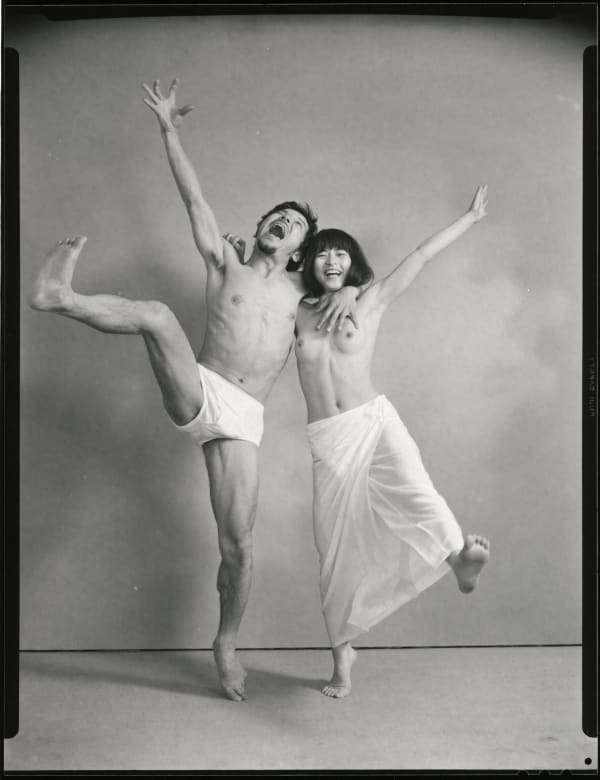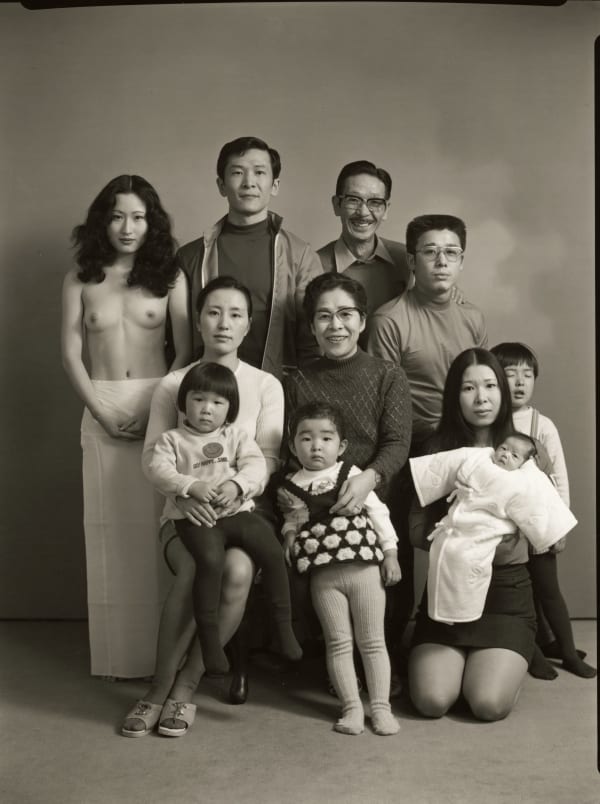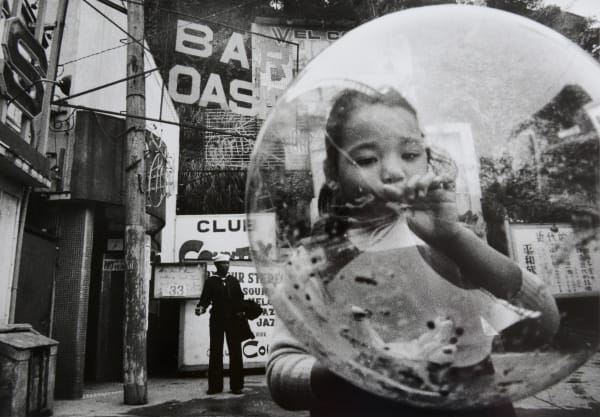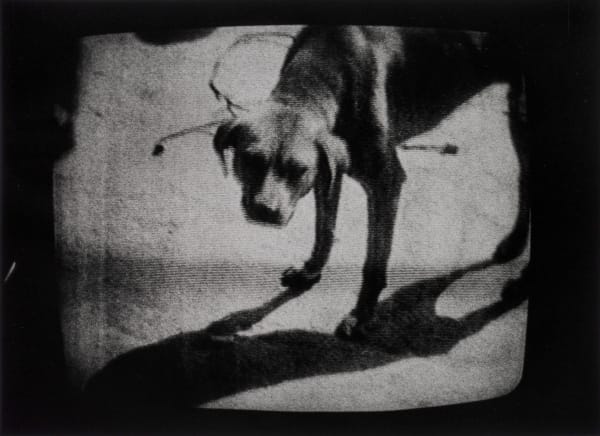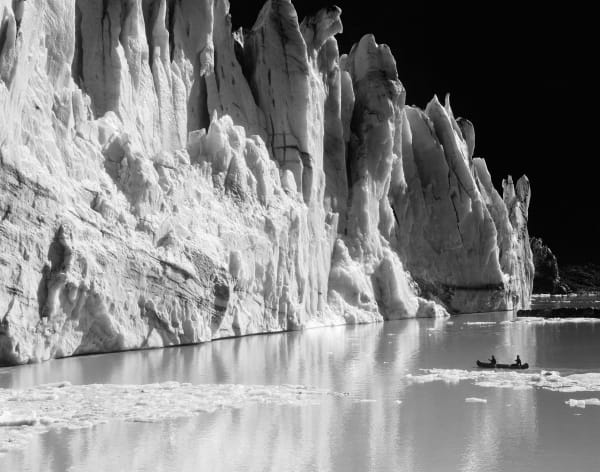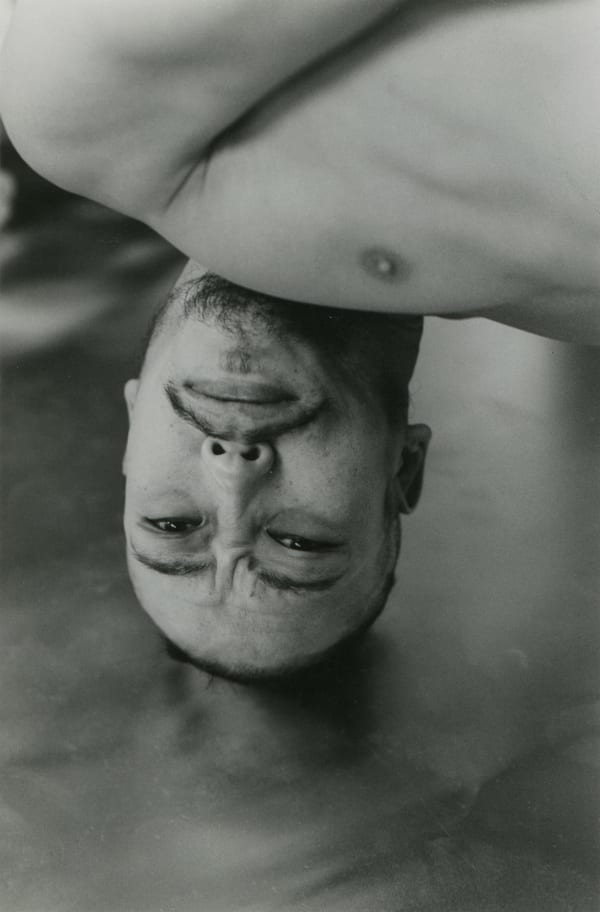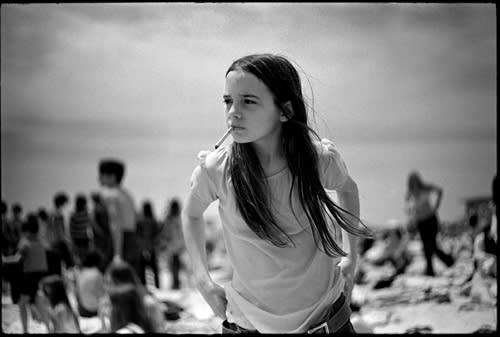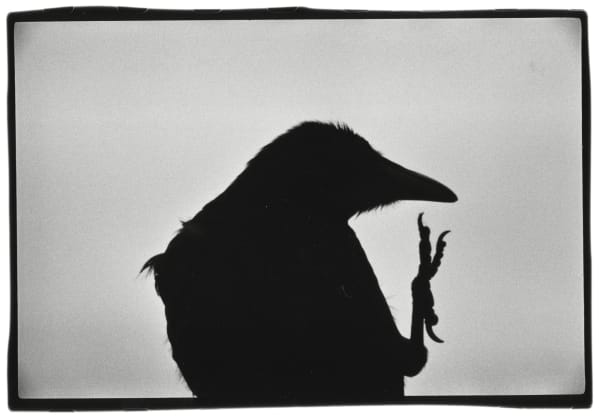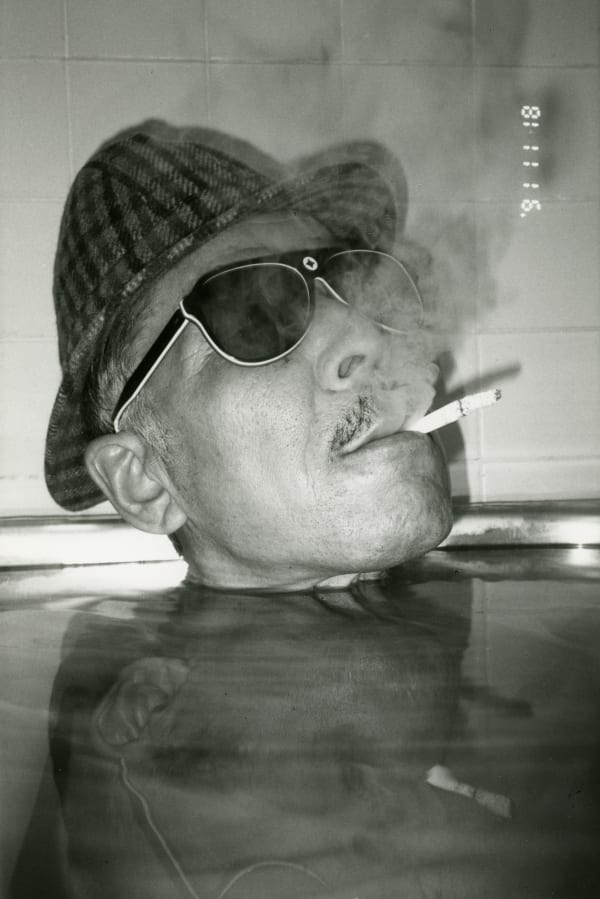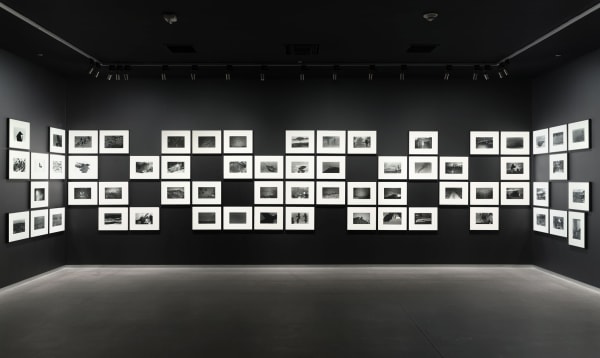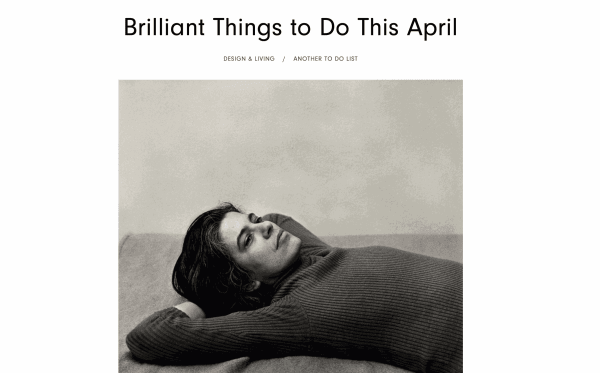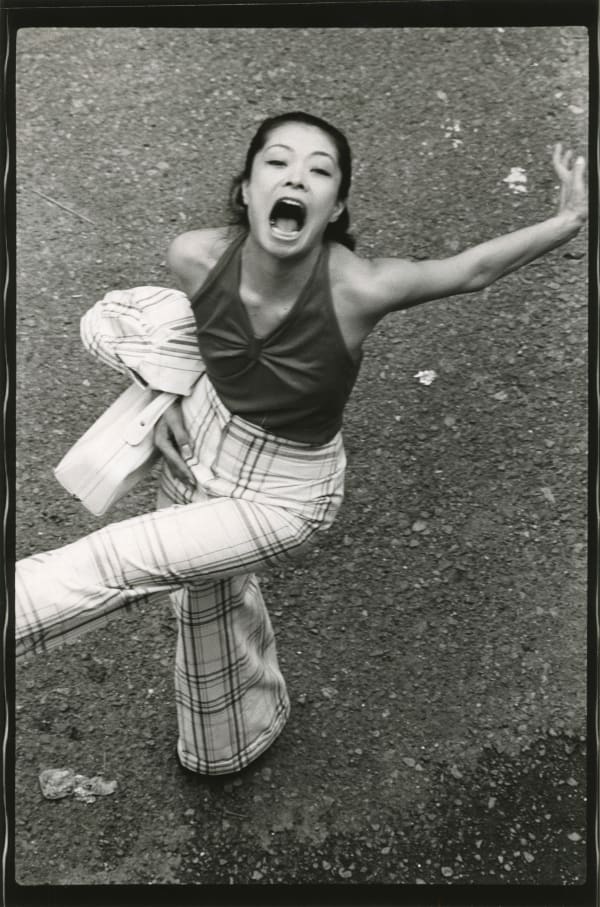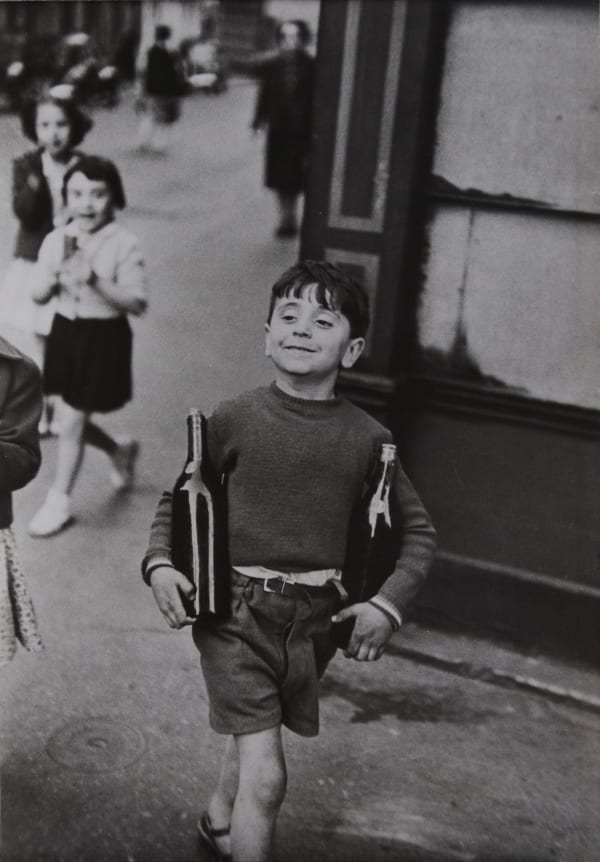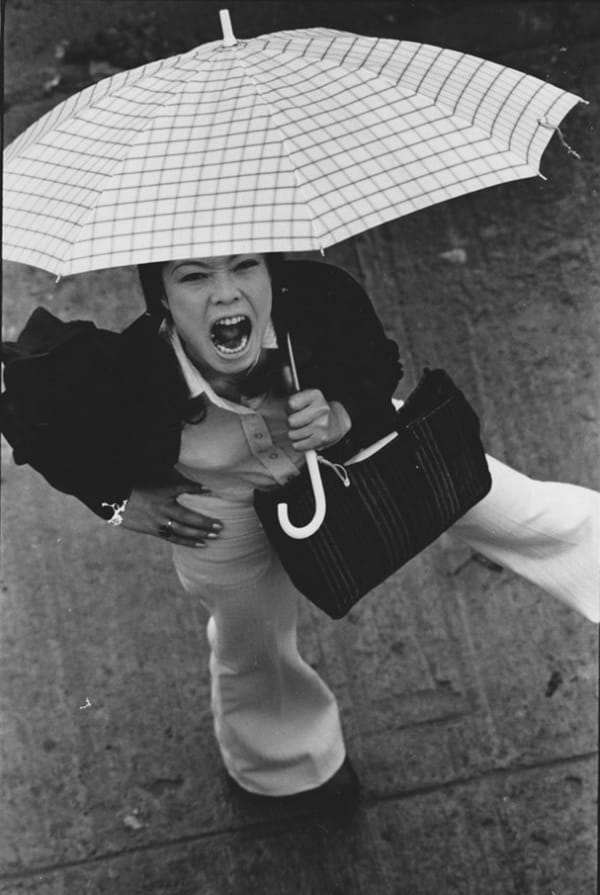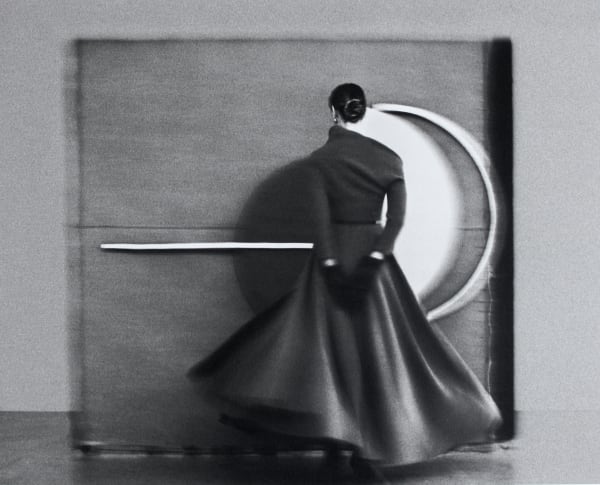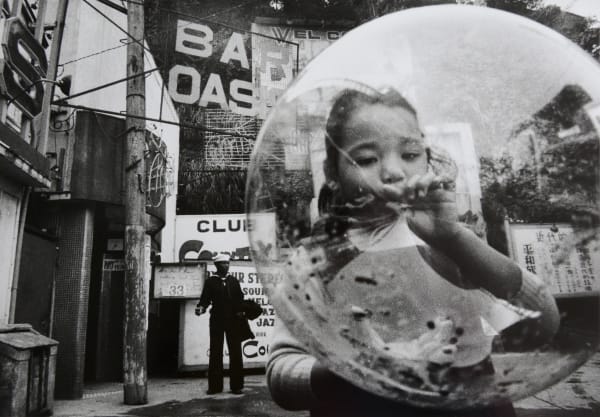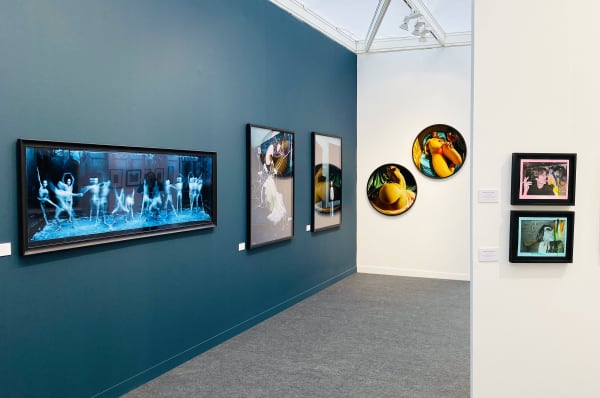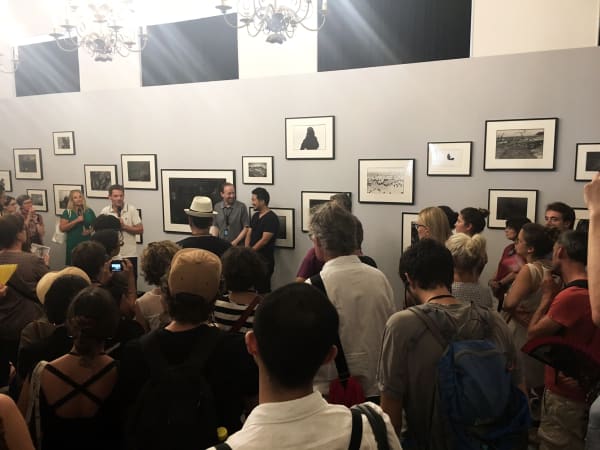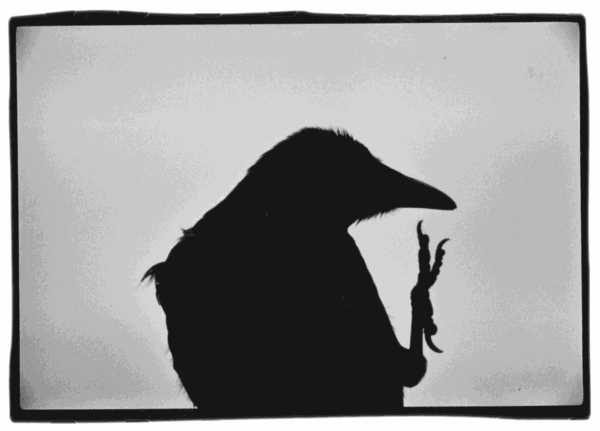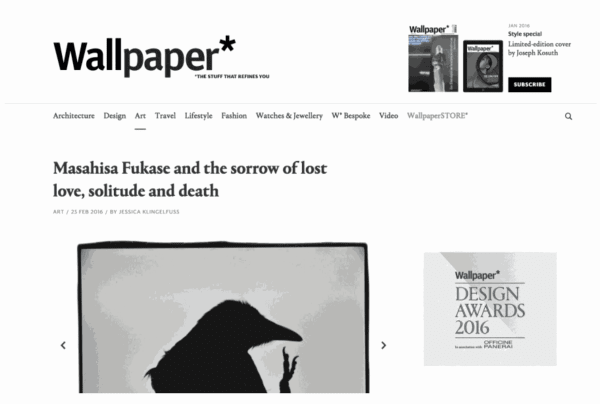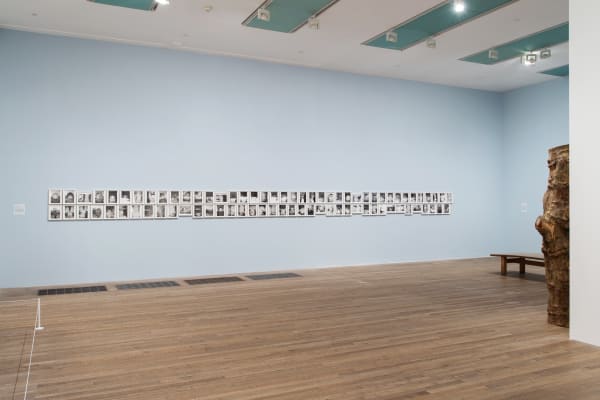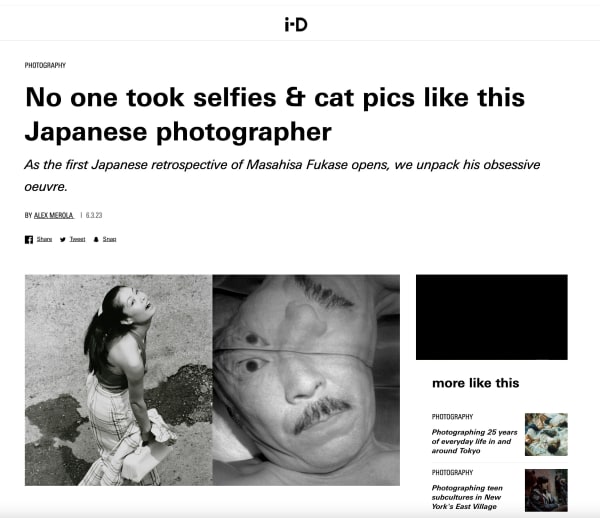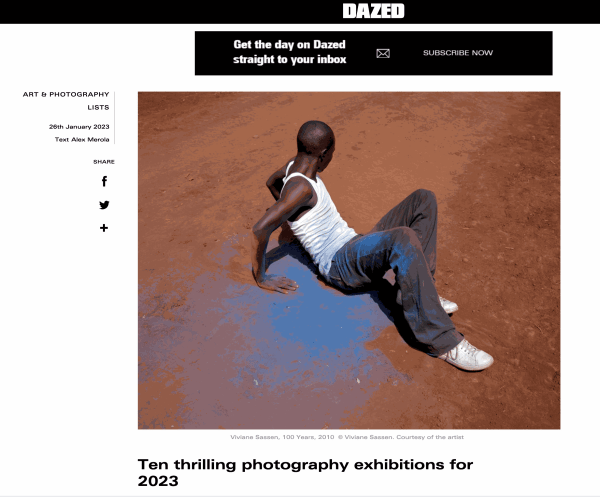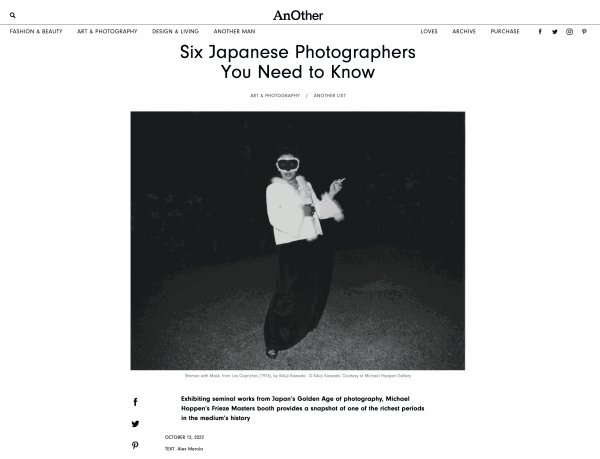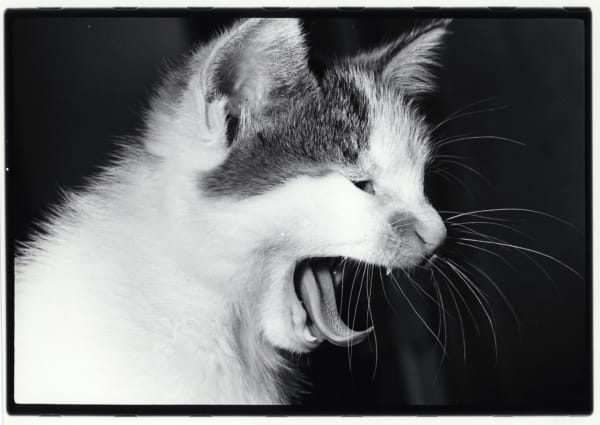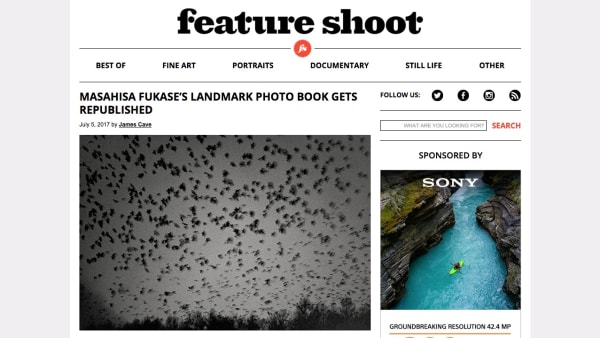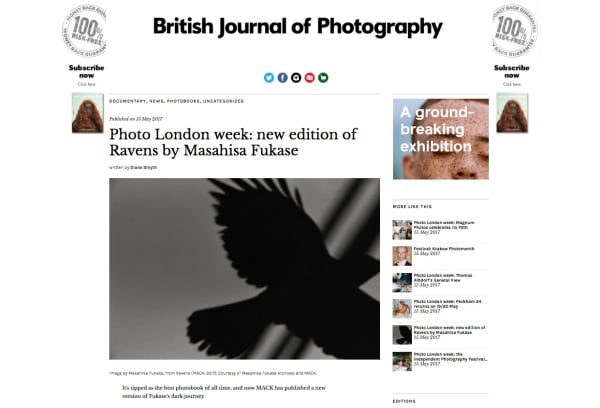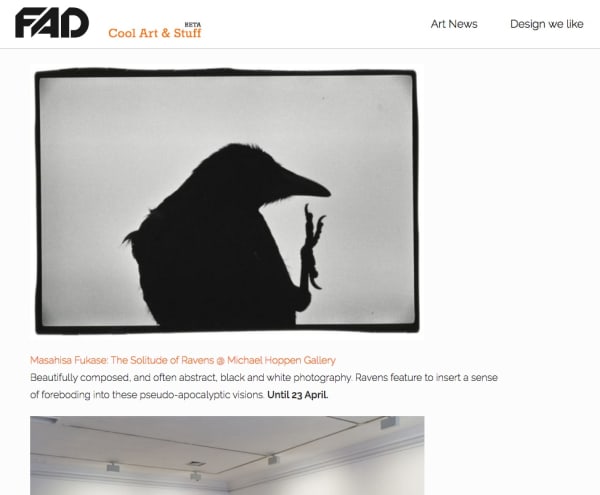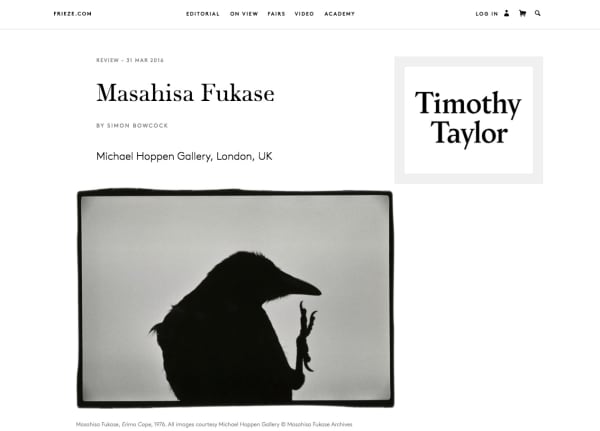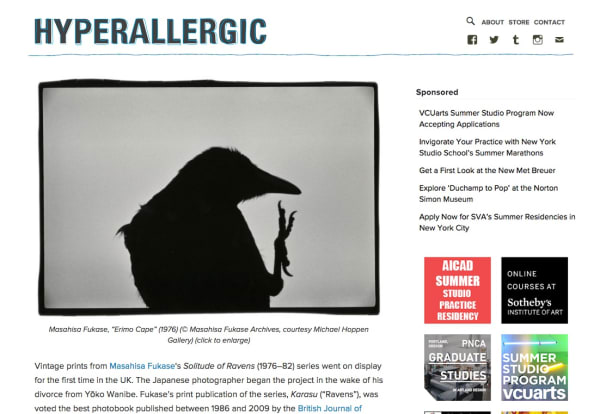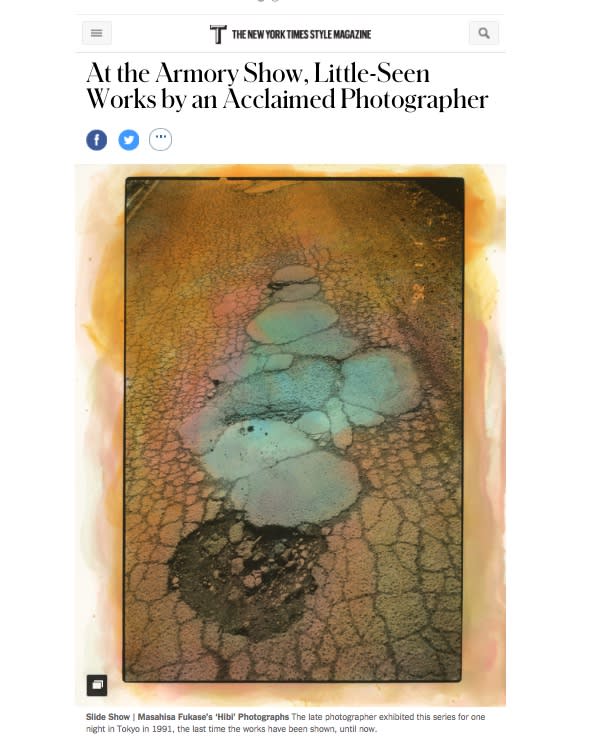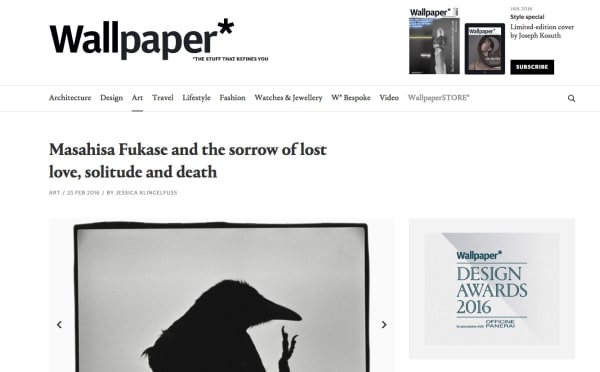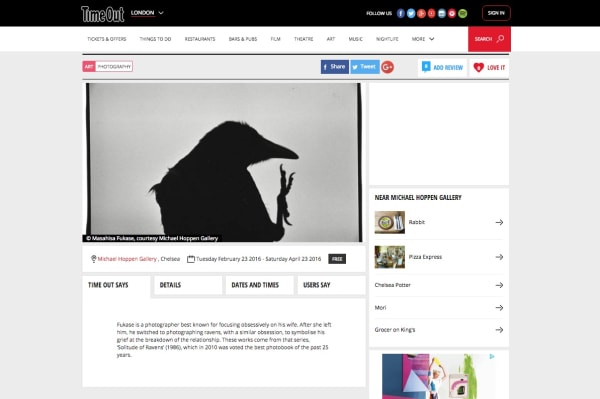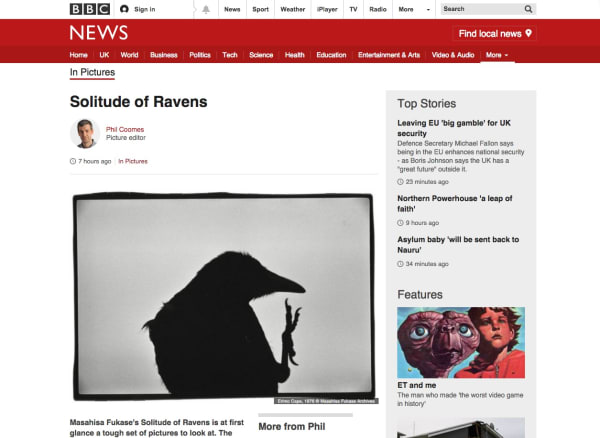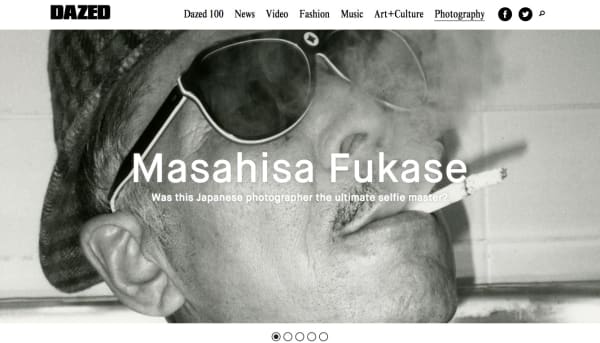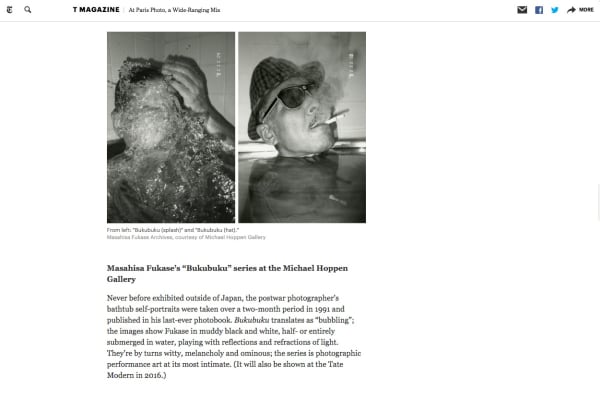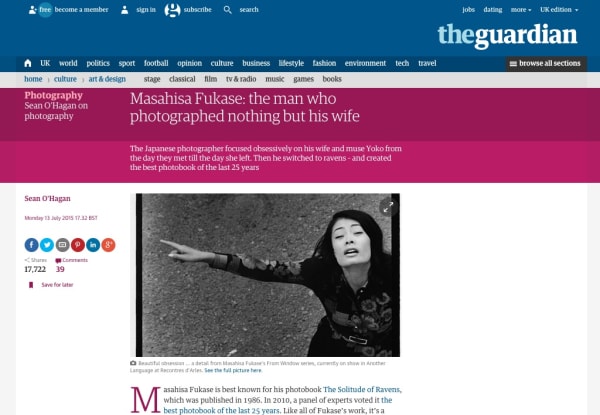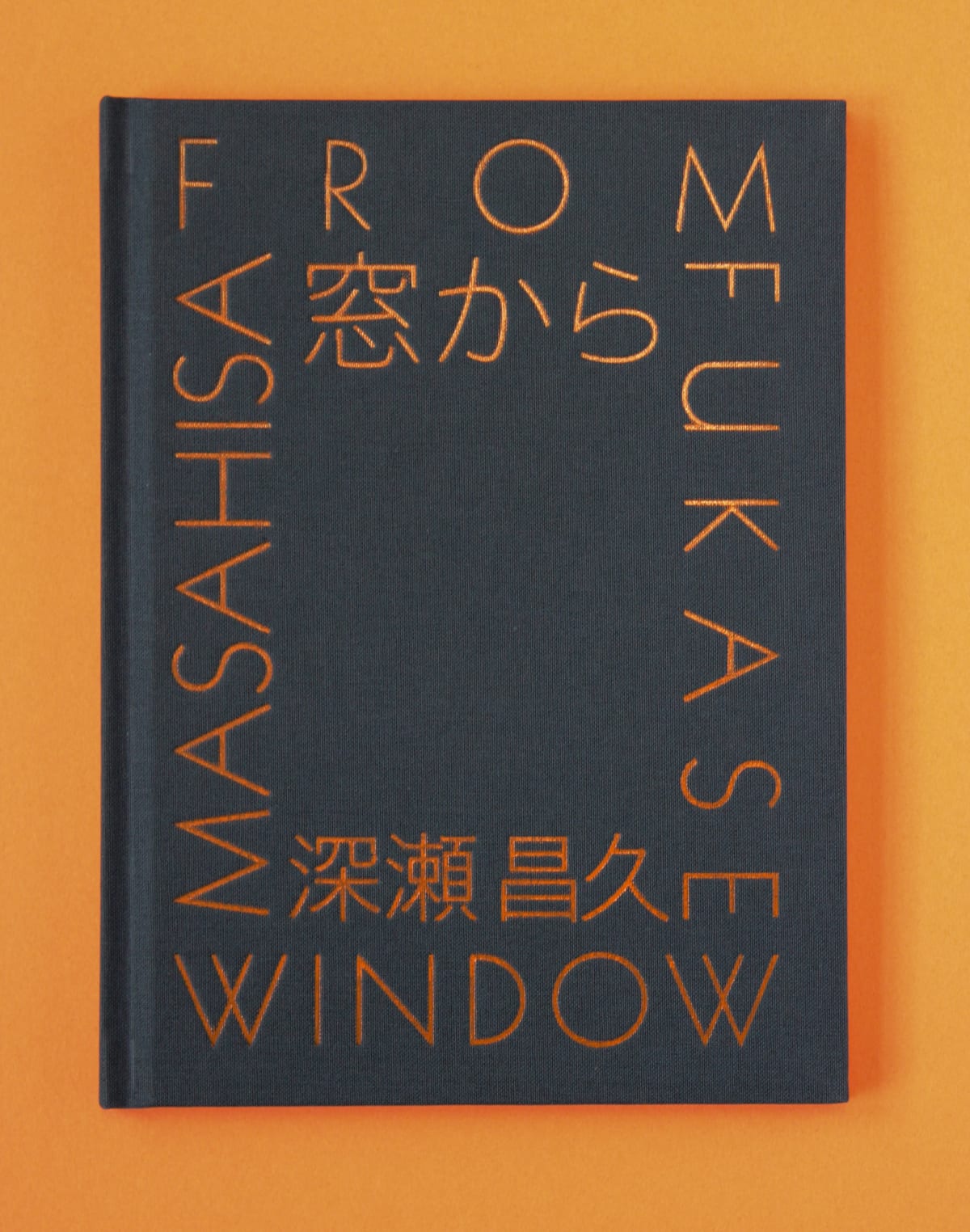Works
-
 Erimo Cape, (variant), 1976
Erimo Cape, (variant), 1976 -
 Yoko, 1975
Yoko, 1975 -
 Family, 1972-1973
Family, 1972-1973 -
 Kanazawa, from Solitude of Ravens, 1978
Kanazawa, from Solitude of Ravens, 1978 -
 Untitled, from the Solitude of Ravens, 1976-1986
Untitled, from the Solitude of Ravens, 1976-1986 -
 Nayoro, from the Solitude of Ravens, 1977
Nayoro, from the Solitude of Ravens, 1977 -
 Otaru, from the Solitude of Ravens, 1975
Otaru, from the Solitude of Ravens, 1975 -
 Erimo Cape, from the Solitude of Ravens, 1976
Erimo Cape, from the Solitude of Ravens, 1976 -
 Untitled, from Solitude of Ravens, 1975-1985
Untitled, from Solitude of Ravens, 1975-1985 -
 Untitled, from the Solitude of Ravens, 1976-1986
Untitled, from the Solitude of Ravens, 1976-1986 -
 Untitled, from the Solitude of Ravens, 1975-1985
Untitled, from the Solitude of Ravens, 1975-1985 -
 Untitled, from the Solitude of Ravens, 1975-1985
Untitled, from the Solitude of Ravens, 1975-1985 -
 Untitled, from the Solitude of Ravens, 1975-1985
Untitled, from the Solitude of Ravens, 1975-1985 -
 Yoko, from Homo Ludence, 1964
Yoko, from Homo Ludence, 1964 -
 Dream Island, Tokyo, 1980
Dream Island, Tokyo, 1980 -
 Untitled, from Private Scenes, 1992
Untitled, from Private Scenes, 1992 -
 Untitled, from Private Scenes, 1991
Untitled, from Private Scenes, 1991 -
 Untitled from Private Scenes ( Paris) , 1990
Untitled from Private Scenes ( Paris) , 1990 -
 Sasuke!! My Dear Cat, 1978
Sasuke!! My Dear Cat, 1978 -
 Sasuke!! My Dear Cat, 1978
Sasuke!! My Dear Cat, 1978 -
 Sasuke!! My Dear Cat , 1978
Sasuke!! My Dear Cat , 1978 -
 From Window, 1974
From Window, 1974 -
 HIBI 29, 1991
HIBI 29, 1991 -
 HIBI 34, 1991
HIBI 34, 1991 -
 Berobero - Untitled, 1991
Berobero - Untitled, 1991 -
 Berobero - Untitled, 1991
Berobero - Untitled, 1991 -
 Family: A variant of photo number 13, 1972
Family: A variant of photo number 13, 1972 -
 Family, To the far left is a student actor named O, my brother Toshiteru, my father Sukezo, my sister’s husband Hisashi Daikouji. From the bottom left: my brother’s wife Akiko, and my sister’s eldest son Manabu, my mother Mitsue, my brother’s eldest daugh, 1972
Family, To the far left is a student actor named O, my brother Toshiteru, my father Sukezo, my sister’s husband Hisashi Daikouji. From the bottom left: my brother’s wife Akiko, and my sister’s eldest son Manabu, my mother Mitsue, my brother’s eldest daugh, 1972 -
 Family, To the far left is a student actor named O, my brother Toshiteru, my father Sukezo, my sister’s husband Hisashi Daikouji. From the bottom left: my brother’s wife Akiko, and my sister’s eldest son Manabu, my mother Mitsue, my brother’s eldest daugh, 1972
Family, To the far left is a student actor named O, my brother Toshiteru, my father Sukezo, my sister’s husband Hisashi Daikouji. From the bottom left: my brother’s wife Akiko, and my sister’s eldest son Manabu, my mother Mitsue, my brother’s eldest daugh, 1972
Biography
Masahisa Fukase is renowned for his deeply introspective photography, through which he illustrated his intense and occasionally violent life. His body of work is remarkable for the extraordinary breadth of visual perspectives that it encompasses; he altered the conceptual language of his work to suit the different narratives he innovated throughout his career. Fukase’s photographs appear as instinctively assured and graphically iconic when shot in regional slaughterhouses or Shinjuku street orgies as in his own home, capturing the antithetical excesses and seeming contradictions of his life.
His most critically lauded series, The Solitude of Ravens (1986), was created over a period of ten years, following the breakdown of his second marriage to Yōko Wanibe. Stark and monochrome, the ravens become a symbol of lost love and unendurable heartbreak, evolving into a personal iconography of bleakly universal emotional resonance. Fukase’s abstracted grief for Yōko appears in particularly cold relief contrasted against his insouciant, intimate pictures of his young bride during their domestic happiness in the 1970s.
In his series Family (1991), Fukase subverted the customary format of traditional family portraits, drawing attention to uncomfortable truths and ambiguities which such formal illustrations often suppress. This mode of photography, which had been a popular stock in trade for the studio run by Fukase’s father and grandfather, is turned on its head by the integration of non-family members in various atypical guises. The series oscillates between ironic humour, absurd self-awareness, and a meditative reflection of the role of photography in commemorating and binding together families. As part of the series, Fukase photographed his father in anticipation of his imminent death, and this funeral portrait is included alongside living family members in portraits staged after his passing.
The spontaneous and prolific creativity of this work, during which Fukase experimented artistically and sexually with concepts of intimacy, performance and social convention, contrasts with later work which reflects a more insular, psychologically absorbed vision. His prescient extended self-portraits in Berobero, Private Scenes and Hibi (1990-1992) were the result of protracted ongoing self-examinations, only completed shortly before Fukase’s debilitating fall in 1992. These series have been described by critic Phillip Charrier as ‘whimsical if somewhat morbid games of solitaire which chart new territory for the photographic self-portrait.’
Fukase was born in Hokkaido, the northern-most major island of Japan, in 1934. He graduated from Nihon University College of Art's Photography Department in 1956, and became a freelance photographer in 1968. Fukase’s work has been exhibited widely at institutions such as the Museum of Modern Art, New York, the Oxford Museum of Modern Art, Oxford, the Foundation Cartier pour l'Art Contemporain, Paris, and the Victoria & Albert Museum, London. His work is held in major collections including the Victoria & Albert Museum, the San Francisco Museum of Modern Art, the Metropolitan Museum of Art, New York, and The J. Paul Getty Museum, Los Angeles.
All the Masahisa Fukase works shown at our gallery and on our website are all authenticated vintage works that come directly from the Masahisa Fukase Archives. Each print was printed by Masahisa Fukase himself, and are all accompanied by a signed certificate of authenticity.
Exhibitions
-

AIPAD | The Photography Show
Park Avenue Armory, New York City 23 - 27 Apr 2025Read more -

Masahisa Fukase; From Window, 1974
10 Portland Road 26 Sep - 8 Nov 2024'Shot each morning from the window of their apartment on the fourth floor of a sprawling suburban housing complex, Fukase captured Wanibe in the seconds as she was leaving their...Read more -

OKASHI
10 Portland Road 13 Apr - 30 Jun 2024The Michael Hoppen Gallery is delighted to present a kaleidoscope of works crossing centuries, genre, and media, to reveal a different interpretation of Japan – neither a delicate vision of...Read more -

PARIS PHOTO 2023
GRAND PALAIS ÉPHÉMÈRE 9 - 12 Nov 2023Michael Hoppen Gallery is delighted to share a preview of our Paris Photo presentation. The fair opens at the Grand Palais Éphémère in the grounds of the Champ-de-Mars on Wednesday...Read more -

Photo London
Somerset House • Stand W02 10 - 14 May 2023Michael Hoppen is pleased to return to the 8th edition of Photo London with an exciting selection of works by iconic contemporary artists as well as newly-released works.Read more -

The Photography Show, AIPAD
Center 415 • Stand 225 30 Mar - 2 Apr 2023Upcoming photography fair in New York CityRead more -

Paris Photo 2022
Grand Palais Éphémère • Stand D27 10 - 13 Nov 2022For this year’s edition of Paris Photo, the Michael Hoppen Gallery has curated an exhibition of exquisite, unique works. The term ‘unique’ has become ubiquitous, but we use it here...Read more -

Frieze Masters 2022
Regent's Park • Stand A08 12 - 16 Oct 2022At Frieze Masters 2022, we are delighted to be exhibiting key works by members of the iconic generation of Japanese photographers who rose to prominence during the post-war period. The...Read more -

The Photography Show, AIPAD 2022
Center415 • Stand 222 20 - 22 May 2022After what seems like an eternity, we are so looking forward to once again being in New York for The Photography Show presented by AIPAD. To be amongst you, our...Read more -

Paris Photo 2021
Grand Palais Éphémère • Stand D24 10 - 14 Nov 2021We are absolutely delighted to be returning to Paris Photo 2021 after our forced absence from art fairs - but especially Paris Photo which we have participated in for the...Read more -

PHOTO LONDON 2021
Somerset House • STAND C1 8 - 12 Sep 2021Dear Friends, We are very excited to be exhibiting at Photo London again, opening at Somerset House on Wednesday 8 September. You will find us at stand C1 on the...Read more -

MASAHISA FUKASE: Private Scenes
Gallery exhibition & Online 14 Sep - 1 Dec 2020In the year that social distancing and self-isolation have entered our daily vernacular, Michael Hoppen Gallery is delighted to present Private Scenes , an exhibition of Masahisa Fukase’s late photography...Read more -

Paris Photo 2019
Grand Palais • STAND C9 7 - 10 Nov 2019Michael Hoppen Gallery will be showing a solo booth of Tim Walker at this years Paris PhotoRead more -

Photo London 2019
Somerset House • Booth C1 16 - 19 May 2019Exhibited Artists: • Peter Beard • Cecil Beaton • Will Connell • Sian Davey • Eamonn Doyle • Lee Friedlander • Masahisa Fukase • Colin Jones • O. Winston Link...Read more -

AIPAD, NEW YORK
BOOTH 603 4 Apr - 7 Mar 2019BOOTH 603 Exhibited Artists: Nobuyoshi Araki Peter Beard Guy Bourdin Siân Davey Eamonn Doyle Masahisa Fukase Fergus Greer Chiero (Count Louis Hamon) Eikoh Hosoe Ishiuchi Miyako Sarah Moon Daido Moriyama...Read more -

ART GENÈVE 2019
Palexpo • BOOTH B39 31 Jan - 3 Feb 2019A preview of what Michael Hoppen Gallery will be taking toArt Geneva, SwitzerlandRead more -

Shashin: are-bure-boke
14 Sep - 16 Nov 2018An exhibition of Japanese photographic mastersRead more -

PHOTO LONDON 2018
SOMERSET HOUSE 17 - 20 May 2018A brief look at what Michael Hoppen Gallery will be presenting at Somerset HouseRead more -

Aipad 2018
New York • Booth 206 5 - 8 Apr 2018Michael Hoppen Gallery will be exhibiting upcoming artists alongside acknowledged 20th and 21st century masters.Read more
-

PARIS PHOTO 2017
Grand Palais • Booth C10 9 - 12 Nov 2017Michael Hoppen Gallery will be at Paris Photo, 2017, booth C10.Read more -

THE ARMORY SHOW
BOOTH 416 2 - 5 Mar 2017An assortment of works from the collection that MHG will be taking to this years Armory art fair in New York.Read more -

THE ARMORY SHOW 2016
New York 3 - 6 Mar 2016A preview of the artists and artworks Michael Hoppen Gallery will be bringing to Armory 2016, NY.Read more -

MASAHISA FUKASE
Solitude of Ravens 24 Feb - 23 Apr 2016Japanese photographer Masahisa Fukase's series 'Solitude of Ravens' goes on display for the first time in the UK at Michael Hoppen Gallery from 24th February, 2016.Read more -

Paris Photo
GRAND PALAIS • BOOTH C10 12 - 15 Nov 2015The Michael Hoppen Gallery list of artists to be exhibited at Paris Photo 2015.Read more
News
-

Ravens by Masahisa Fukase
Pier 24 | Turning the Page June 14, 2024A picture is worth a thousand words. Pier 24 Photography's current exhibition ‘ Turning the Page ’ in San Francisco, looks at and celebrates the...Read more -

Brilliant Things to Do This April
AnOther Magazine April 2, 2024“The concept of okashi has been used throughout Japanese aesthetic history to refer to those things which delight for their strangeness, their humour, or their...Read more -

From Window | Paris Photo 2023
Masahisa Fukase November 6, 2023Michael Hoppen is delighted to be showing an entire wall of 32 unique photographs at Paris Photo this year by the late Japanese photographer, Masahisa...Read more -

10 beautiful photobooks to check out this summer
i-D August 9, 2023If there’s a better summer pastime than whiling away the hours with a page-turner, we are yet to find it. Summer is, famously, the season...Read more -

Summer Newsletter 2023
August 3, 2023It’s the summer, time to look forward to some lazy days, but also to a busy autumn which will soon be upon us. As you...Read more -

Photo London 2023
Michael Hoppen's Highlights May 10, 2023Michael Hopen Gallery is delighted to return to Somerset House for the 8th edition of Photo London. For this year's edition, we are proud to...Read more -

The Photography Show presented by AIPAD 2023
Michael Hoppen's Highlights March 21, 2023Michael Hoppen Gallery is pleased to return to AIPAD, New York, this year with an exceptional group of vintage prints. Each one has a story...Read more -

Masahisa Fukase 1961-1991
First Retrospective in a Japanese Museum March 3, 2023Running from March 3rd - June 4th, 2023, the Tokyo Photographic Art Museum, will present the first museum retrospective in Japan for the work of...Read more -

Masahisa Fukase | Rara Avis
White Cube Paris March 2, 2023Curated by Jerry Stafford, Rara Avis brings together antiquities, artefacts and contemporary works of art sharing the subject of birds. Latin for 'rare bird', the...Read more -

Spring Newsletter 2023
February 9, 2023ARTIST NEWS, EVENTS AND EXHIBITIONS TIM WALKER Solo exhibition: Wonderful Things Journey into the fantastical worlds created by internationally acclaimed fashion photographer Tim Walker. The...Read more -

Paris Photo 2022
Michael Hoppen's Highlights November 1, 2022Michael Hoppen Gallery is delighted to share a preview of our Paris Photo presentation. The fair opens at the Grand Palais Éphémère in the grounds...Read more -

Frieze Masters 2022
Michael Hoppen's Highlights October 10, 2022Michael Hoppen Gallery is delighted to be exhibiting at Frieze Masters 2022, with key works by members of the iconic generation of Japanese photographers who...Read more -

The Photography Show Presented by AIPAD 2022
MICHAEL HOPPEN'S HIGHLIGHTS April 29, 2022After what seems like an eternity, we are so looking forward to once again being in New York for The Photography Show presented by AIPAD!...Read more -

Paris Photo 2021
Michael Hoppen's Highlights November 5, 2021Michael Hoppen Gallery is delighted to be returning to Paris Photo 2021 after our forced absence from art fairs – but especially Paris Photo which...Read more -

Masahisa Fukase: Sasuke
Published by Atelier EXB July 20, 2021Following the survey monograph, this publication is dedicated to Masahisa Fukase’s emblematic series on his two cats: Sasuke and Momoe, combining unpublished and iconic images....Read more -

Winter Newsletter '19
Artist news & a look ahead to next years' programme of art fairs & exhibitionsA look ahead to the 2020 programmeRead more -

Winter Newsletter '19
Highlights and news from our artists and team in Paris and Japan November 7, 2019Our solo exhibition at the gallery in London, Tim Walker: Wonderful People , continues alongside the artist's major solo exhibition at the Victoria & Albert...Read more -

Summer Newsletter '19
A look ahead at Michael Hoppen Gallery's programme Aug 30th, 2019Michael Hoppen Gallery newsletter. Exhibitions and artist news from 2019.Read more -

Masahisa Fukase
Photo London: Featured Artist 16-19 May, 2019Photo London featured artist from Michael Hoppen Gallery, Booth C1, Masahisa FukaseRead more -

FINDING FUKASE
Financial Times Article July 7, 2017Japanese photographer Masahisa Fukase has his retrospective in Arles reviewed by the FTRead more -

MASAHISA FUKASE
Recontres d'Arles retrospective: The Incurable Egoist 3 July - 24 SeptemberThe first retrospective of Japanese photographer Masahisa Fukase's work in EuropeRead more -

Ravens by Masahisa Fukase
Panel discussion at The Courtauld Institute of Art Thursday 18th, 5:30pmA panel discussion with Michael HoppenRead more -

MASTERS OF JAPANESE PHOTOGRAPHY
Sainsbury Centre exhibition 11 Nov - 19 Mar, 2017Sainsbury centre in Norwich has opened a remarkable exhibition showcasing Japanese photography. Many of the works are available at Michael Hoppen Gallery.Read more -

Contemporary Japanese Photography Seminar
DAIWA Anglo-Japanese Foundation 11th May, 7:00 – 8:00pmMichael Hoppen and Simon Baker discuss the photographic creativity and innovation emerging from contemporary Japanese photo artists.Read more -

MASAHISA FUKASE
Armory Art Fair: Featured Artist 3 - 6 MAR 2016Masahisa Fukase's colorful 'Hibi' series goes on display in New York, Armory, 2016.Read more -

Masahisa Fukase: Solitude of Ravens
A round up of important press February 25, 2016Masahisa Fukase 'Solitude of Ravens' at the Michael Hoppen Gallery in London. Exhibition runs until 23rd April, 2016.Read more -

MHG Newsletter '16
Michael looks ahead to an exciting year for the gallery February 23, 2016The Michael Hoppen Gallery newsletter summarises the year ahead for the galleryRead more -

Perfoming for the Camera
Exhibition at Tate Modern, London 18 Feb – 12 June, 2016What does is it mean to perform for the camera? Tate Modern's new photography exhibition in London explores this theme. (Masahisa Fukase, Eikoh Hoseo, Japan)Read more -

Performing for the Camera
Masahisa Fukase's 'Bukubuku' to go on display at the Tate Modern 18 February – 12 June 2016Japanese photographer Masahisa Fukase's performance piece 'Bukubuku' is to go on display at the Tate Modern. Find out more about the show here.Read more -

Japanese Photography: The Birth of a Market
Michael Hoppen talks to Blouin Art Info December 16, 2015Michael Hoppen talks to press about the Japanese photography and our long term partnership with many of the greatest post-war photographers.Read more -

Masahisa Fukase
PARIS PHOTO: FEATURED ARTIST November 13, 2015A Paris Photo Special artist feature: Masahisa Fukase's remarkable set of prints on display at our stand at Paris Photo, Bukubuku (Bubbling)Read more
Press
-

No one took selfies & cat pics like this Japanese photographer
Alessandro Merola, i-D Magazine - VICE, March 6, 2023 -

Ten thrilling photography exhibitions for 2023
Dazed Digital, January 26, 2023 -

Six Japanese Photographers You Need to Know
Alessandro Merola, AnOther Mag, October 12, 2022 -

Ten Unmissable Highlights From Paris Photo 2021
Sarah Moroz, AnOther Mag, November 12, 2021 -

PARIS PHOTO IN TEN LOOKS
By Clementine Mercier and Elisabeth Franck-Dumas, Libération, November 11, 2017 -

ARLES: MASAHISA FUKASE, FROM FEATHERED PADS
Clémentine Mercier, LIBÉRATION, July 6, 2017 -

Arles 2017 – “Photography as an experience” themed visit
Arthur Dayras, L'oeil de la photographie, July 5, 2017 -

MASAHISA FUKASE’S LANDMARK PHOTO BOOK GETS REPUBLISHED
James Cave, Feature Shoot, July 5, 2017 -

Photo London week: new edition of Ravens by Masahisa Fukase
Diane Smyth, British Journal of Photography, May 17, 2017 -

The Top 6 Art Exhibitions to see in London this week
Tabish Khan, FAD online, April 17, 2016 -

REVIEW: Masahisa Fukase
SIMON BOWCOCK, FRIEZE online, March 31, 2016 -

Fukase's Hibi Series on NYT magazine instagram
New York Times, Tmagazine instagram, March 7, 2016 -

Hyperallergic Online - 'Solitude of Ravens'
Tiernan Morgan, Hyperallergic online, March 4, 2016 -

Top 5 things to do this weekend
Aesthetica Mag, Online, March 4, 2016 -

Amuse - A New old work by Masahisa Fukase
Amuse, Online, March 2, 2016 -

Masahisa Fukase's Hibi photographs
HATTIE CRISELL, New York Times Style Magazine, March 1, 2016 -

Masahisa Fukase and the sorrow of lost love, solitude and death
JESSICA KLINGELFUSS, Wallpaper*, February 25, 2016 -

Masahisa Fukase: Ravens
Time Out, London, February 22, 2016 -

In Pictures: Solitude of Ravens
Phil Coomes, BBC News, February 22, 2016 -

Snapshot: ‘Solitude of Ravens’ by Masahisa Fukase
Elsa Court, FT online, February 19, 2016 -

Brilliant Things To Do in February
AnOther Magazine, February 1, 2016 -

MASAHISA FUKASE'S 'BUKUBUKU' AT TATE MODERN
Tate Online, January 27, 2016 -

Was this Japanese photographer the ultimate selfie master?
Ashleigh Kane, Dazed magazine, November 13, 2015 -

At Paris Photo, a Wide-Ranging Mix
HATTIE CRISELL, NYT Magazine, November 12, 2015 -

Masahisa Fukase: the man who photographed nothing but his wife
Sean O' Hagen, The Guardian, July 13, 2015 -

Flying solo: Ravens by photographer Masahisa Fukase
Guardian Online, May 24, 2010
Publications
Enquire
